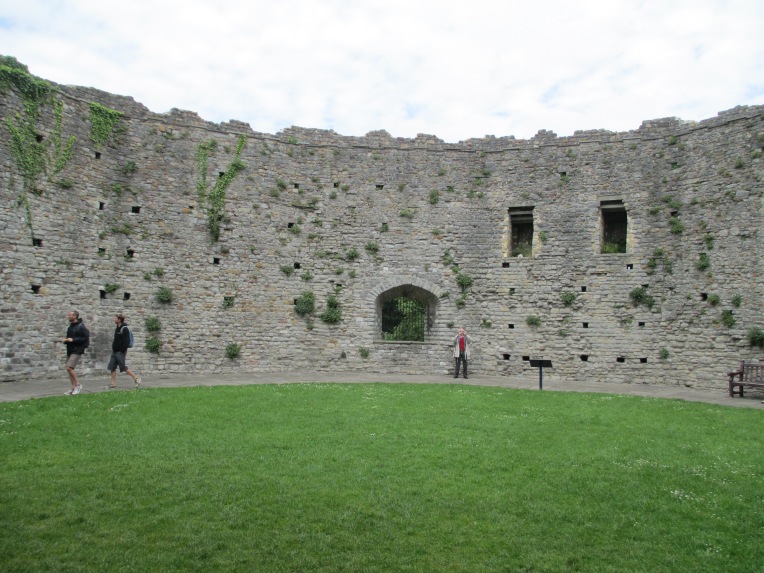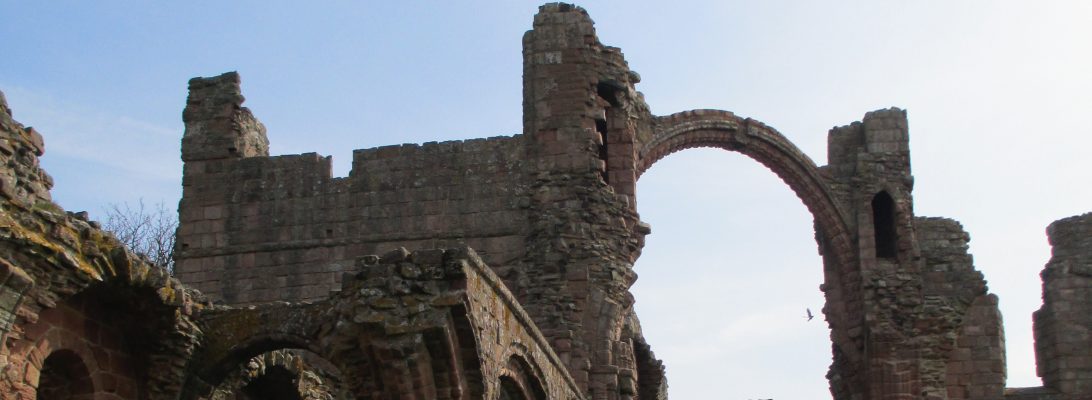 Cardiff castle is a fascinating amalgam, part Roman foundations, part 12th century shell keep, part 19th century victorian gothic palace and part WWII bunker. It manages to encompass many of the key eras of British history, at the same time as being linked to some of the most interesting stories and people of the medieval period.
Cardiff castle is a fascinating amalgam, part Roman foundations, part 12th century shell keep, part 19th century victorian gothic palace and part WWII bunker. It manages to encompass many of the key eras of British history, at the same time as being linked to some of the most interesting stories and people of the medieval period.
For me, naturally, the medieval section of the castle is the most interesting and the most important. I do, however, have a real soft spot for the Victorian gothic section, because it doesn’t pretend to be authentic medieval and it is just so gloriously over the top.
To begin from the beginning though. There is nothing much left of the Roman origins of Cardiff Castle. There were four roman structures on the site between c.54 and 400 CE, the final one was an 8 acre fort with ten foot thick walls. It was a central point for communication for the area. It was abandoned when the Romans left the area at the end of the 5th century CE.
The site was appropriated by the Normans, when they arrived in the late 11th century, to build the original motte and bailey castle. The castle you can see today dates largely to 1140 and was originally built by Robert of Gloucester, the illegitimate oldest son of Henry I of England, though the gatehouse is a 15th century addition. You can see the castle from several angles below.







This is a classic shell keep, meaning that there would not have been permanent rooms in the interior of the keep. There would have been a collection of timber buildings and the structure would not have been roofed. The holes you can see in the walls are called putlog holes and are where the beams of the timber buildings would have been inserted into the wall.
This particular keep has 12 sides, a moat that is roughly 23 m and 2 m thick walls. The castle has two key claims to fame. Firstly that it was the final prison of Robert Duke of Normandy, also known as Robert Curthoes. He was the oldest son of William the Conqueror and was left Normandy as his inheritance. After various conflicts that are too convoluted to go into here, however, his younger brother Henry I of England captured Robert and took Normandy for himself. Robert spent the last 8 years of his life held in Cardiff castle until he died in 1134.
The other key claim to fame for this castle in the medieval period was the kidnap of its lord. In 1158 Welsh lord Ifor Bach stormed the castle and carried off William Earl of Glamorgan and his family. He was forced to ransom his freedom back.
The castle was also threatened by the Welsh in the 1200s and Gilbert de Clare, who held the castle at that point, had the black tower built in what is now part of the outer wall. It was linked to the keep by a massive wall, the remains of which you can see in the photo below. The wall was demolished by Capability Brown in the early beautification of the castle.

The castle played a role in Owain Glyndwr’s revolt in the 1400s as well. It was severely besieged and almost lost before a relief garrison arrived.
Capability Brown may have redesigned most the grounds in the 1700s, including filling in the moat, but it wasn’t him who made the castle what it is today. It was a collaboration between William Burges and the 3rd Marquess of Bute in the mid 1800s.
They re-excavated the moat, re-landscaped much of the grounds, uncovered the Roman foundations and built the ridiculously intricate Victorian gothic mansion that you can still see today. The mansion is very much based on medieval design, and a romanticism of the medieval period.
Burges mainly re-modeled exisiting buildings rather than building from scratch, but he did build the 150 foot high clock tower between 1867 and 1875. You can see some of the exterior below.





It is, however, the interiors which are truly remarkable. The interiors are an amalgam of styles from the beautifully ornate Arab room:
 To the library
To the library


 To the utterly magnificent banqueting hall which depicts key scenes the life and career of Robert Earl of Gloucester on the walls. Incidentally Robert of Gloucester was the father of William of Glamorgan who was captured from Cardiff in the 1150s.
To the utterly magnificent banqueting hall which depicts key scenes the life and career of Robert Earl of Gloucester on the walls. Incidentally Robert of Gloucester was the father of William of Glamorgan who was captured from Cardiff in the 1150s.





 There are beautiful hidden corners all over the 19th century palace, especially in the windows and the ceilings. Below are just a few examples.
There are beautiful hidden corners all over the 19th century palace, especially in the windows and the ceilings. Below are just a few examples.


 After the 19th century the castle stayed in the hands of the Butes until 1947 when it was given to the city of Cardiff by the 5th Marquess of Bute.
After the 19th century the castle stayed in the hands of the Butes until 1947 when it was given to the city of Cardiff by the 5th Marquess of Bute.
The castle wasn’t severely damaged in World War II, through Cardiff was badly bombed. The outer walls however did serve as air raids shelters, which could hold up to 2000 people. You can see one of the areas used in the photo below.

The castle stands at the centre of Cardiff, both literally and figuratively. The streets of the city radiate out from it, and it has been key to most parts of Cardiff’s long history. It is a truly fascinating place to visit.
References:
Site visits 2012 and 2015.
Welsh Castles and Historic Places ISBN: 9781850130307
Castles in Wales: A handbook by Gerald Morgan ISBN: 9781847710314.
All the photos are mine.
